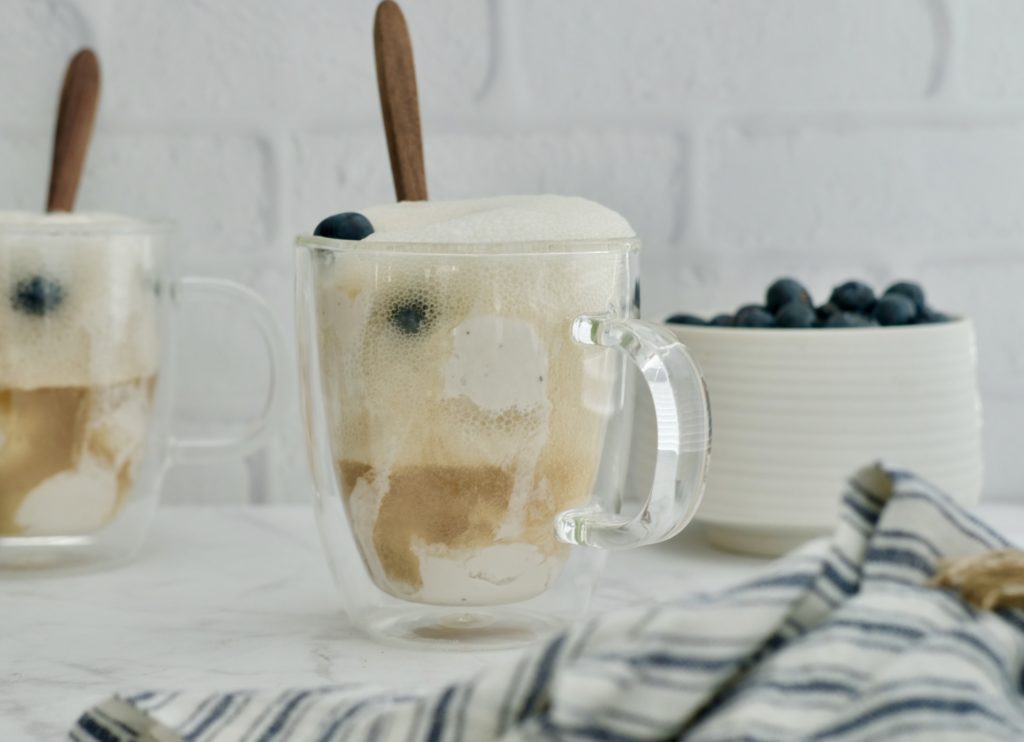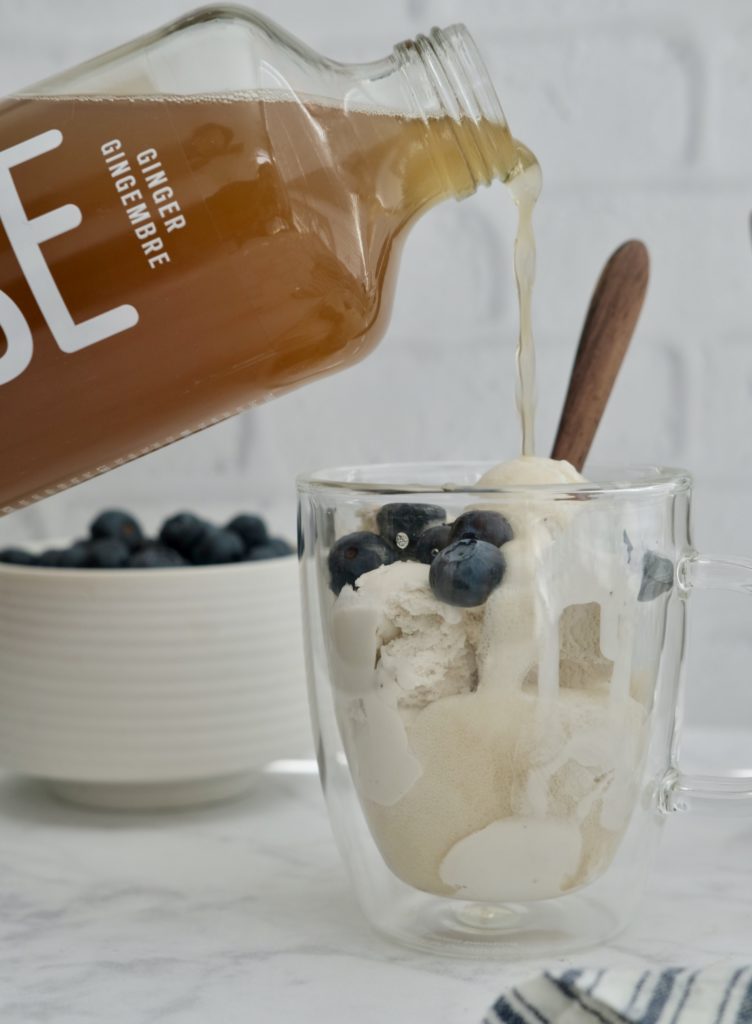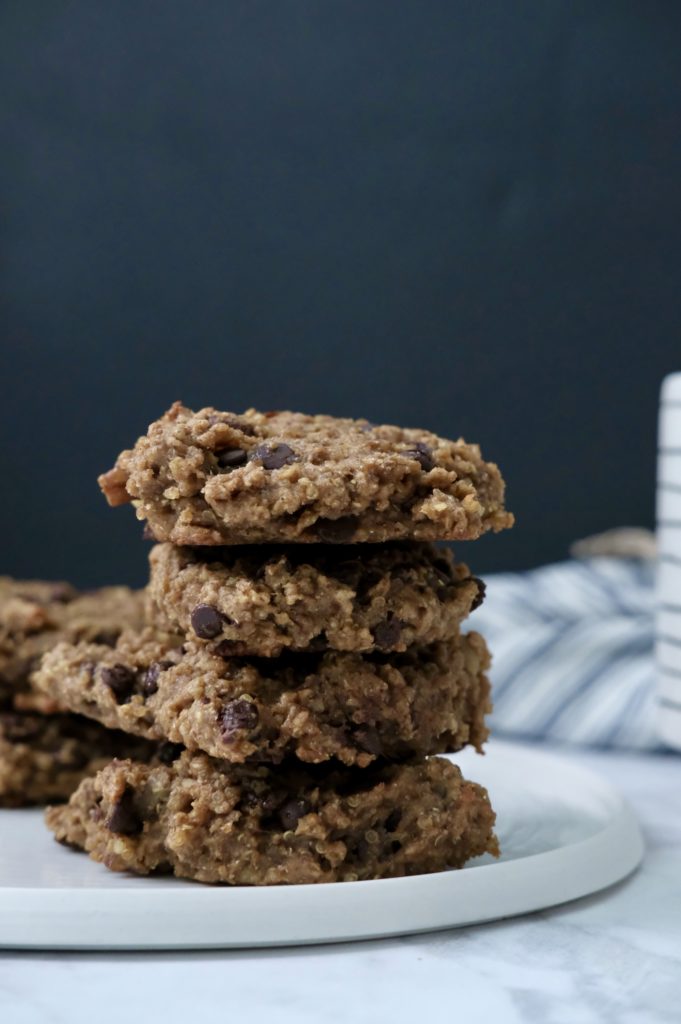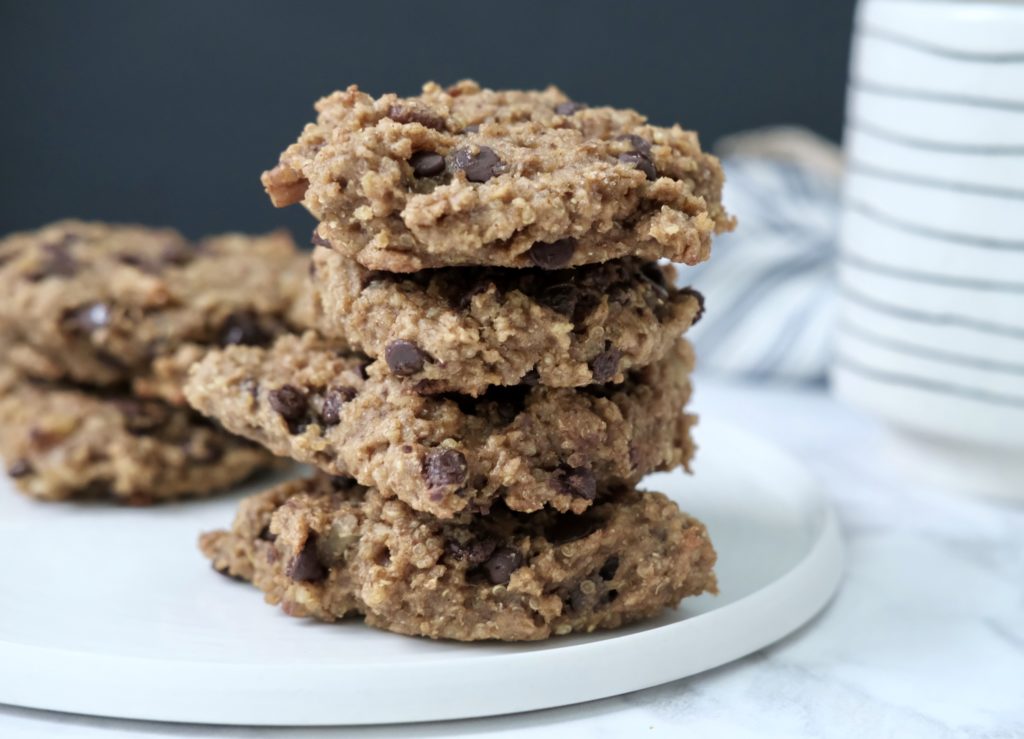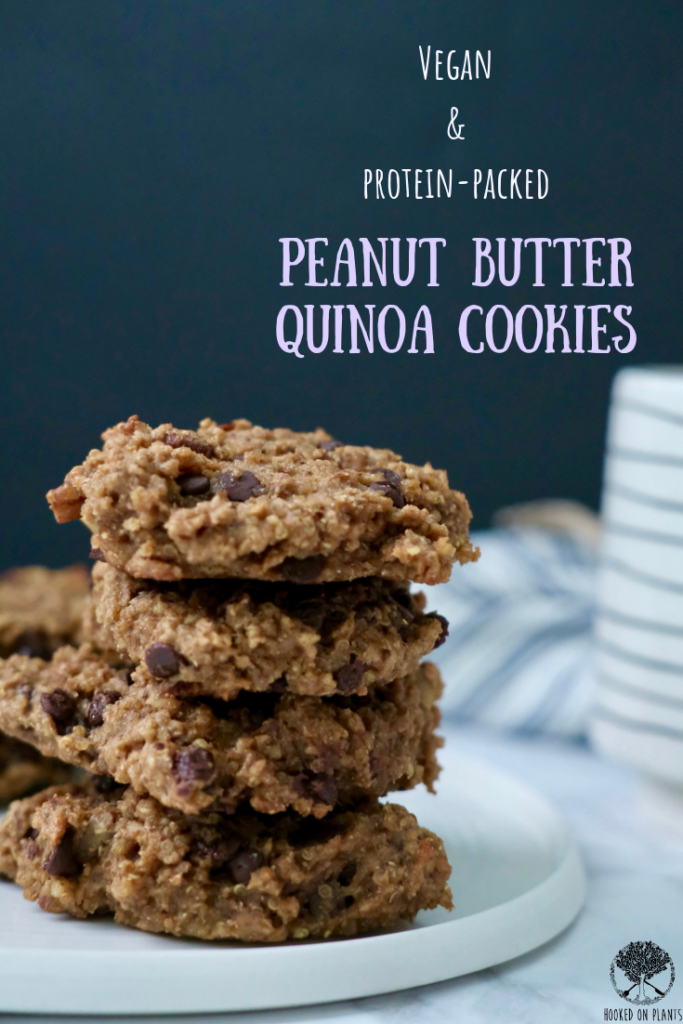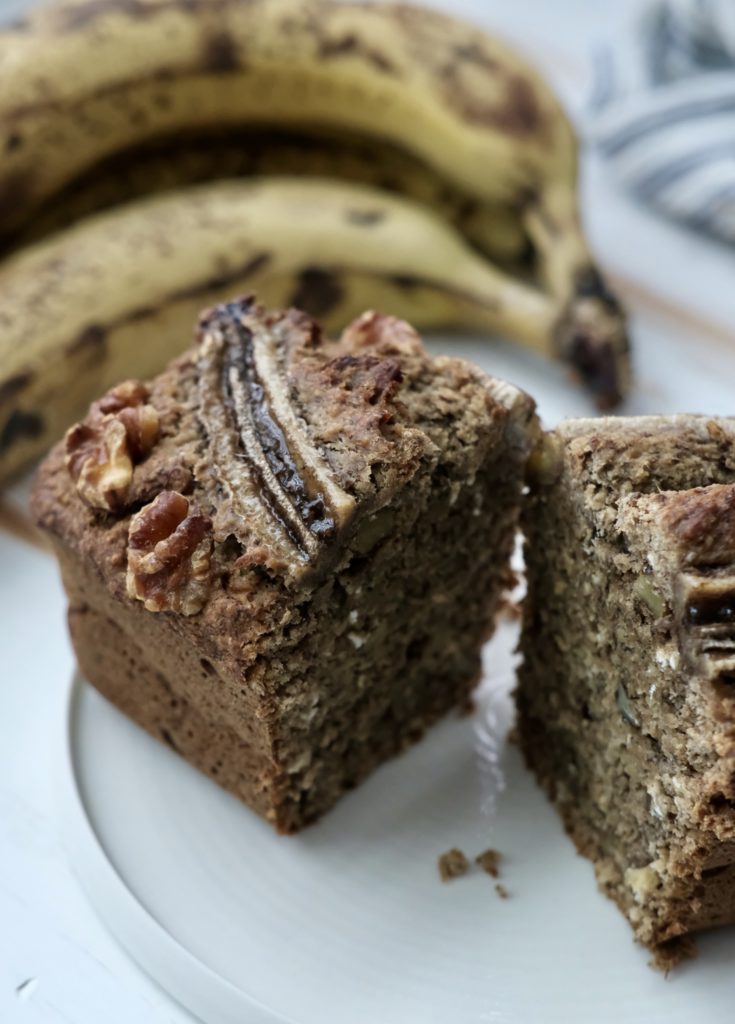Keeping it simple this week with a go-to recipe around here. Vanilla Almond Milk for your next latté, overnight oat soak, or just for that plain ol’ comforting glass of milk with your Peanut Butter Quinoa cookies, or Chocolate Chip Oatmeal cookies, or these classic Black and White cookies.
Making your own milk doesn’t have to be complicated.
3 things you’ll need are:
- Nuts
- Blender
- Mesh (nut milk) bag.
Today we’re using almonds, and feeling a little flavourful…so we’ll add some date sweetness, cinnamon and vanilla goodness with a pinch of salt.

There’s nothing like a fresh batch of homemade plant milk.
Store bought plant milk is pretty darn good these days, but making your own gives you the advantage of knowing every fresh ingredient you put in there.

Of course, I’ve got to mention that ditching the cow’s milk is going to bring mega benefits to your body, the animal’s lives, and the environment.
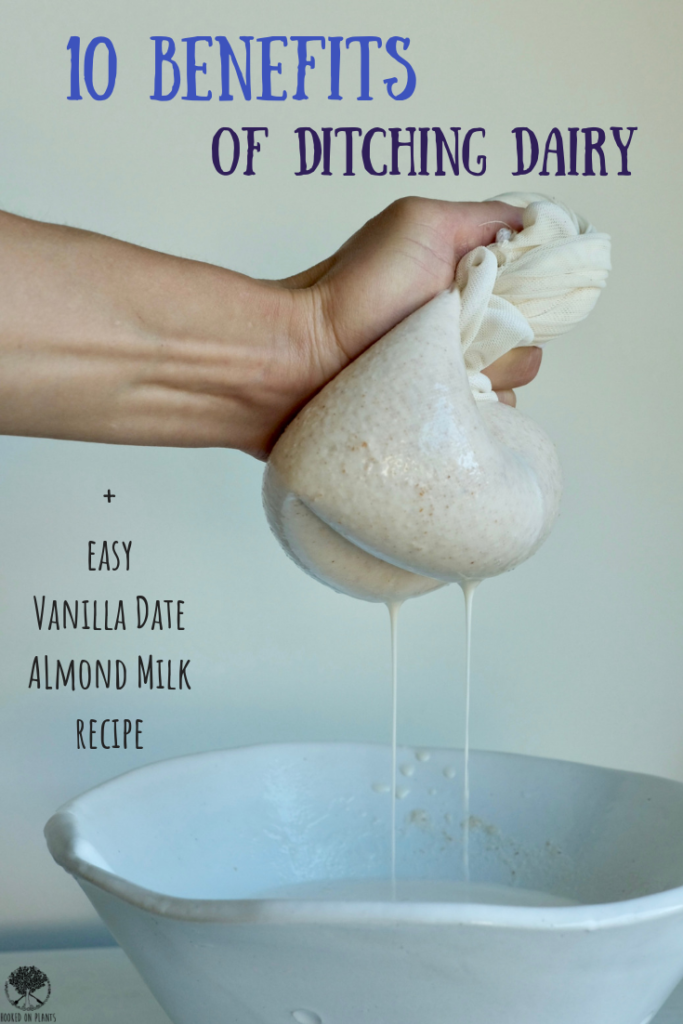
Check out this video to see what Dr. Neal Barnard has to say about why humans are physically addicted to dairy and cheese.

Benefits of Ditching the dairy:
- Clearer skin – less inflammation and hormones
- Less gastrointestinal issues – by decreasing any potential lactose sensitivity
- Less fractures and healthier bones– contrary to popular belief, according to the Nurses’ Health Study dairy may increase risk of fractures by 50 percent! Plus, the countries with the lowest rates of dairy consumption (like Africa and Asia) also have the lowest rates of osteoporosis.
- Improved digestion – that diarrhea, constipation, bloating, gas and nausea could very likely be from a lactose sensitivity or intolerance (65-75% of the world’s population is lactose intolerant)
- Weight loss – by taking out the hormones, animal proteins, lactose, and saturated fat found in the dairy products, many people find excess weight coming off easily. This is because dairy milk is naturally meant to help a calf grow into a cow (it’s a growth fluid)
- Cancer prevention – there has been a strong link between dairy consumption and cancers because dairy consumption increases the body’s level of insulin-like growth factor-1 (IGF-1), a known cancer promoter that encourages tumour growth.
- Stronger bones – because the animal proteins in dairy are difficult for humans to digest, calcium is actually leached from the bones to help absorb with digestion. It’s better to focus on more absorbable sources
- Better for the environment – the dairy industry has a big impact on air quality (greenhouse gas emissions), soil quality (land use, pesticides), and water quality (run offs of antibiotics, pesticides, pathogens, waste products and hormones). The plants grown to feed these cows to produce dairy could instead be eaten directly by us, saving vast amounts of resources.
- Reduce your exposure to antibiotics and hormones – which are used regularly in the US dairy industry to reduce infection and increase production
- Reduce the suffering of the cows – the less we demand dairy, the less it will be mass produced 🙂

Something to think about:
The majority of humans naturally stop producing large amounts of lactase (the enzyme needed to metabolize the sugar in milk, lactose) between the ages of 2 and 5. This is normal for most mammals once they have been milk been weaned, because we simply don’t need to produce the enzymes for properly digest and metabolize milk anymore. Our bodies just aren’t made to digest milk on a regular basis, especially as adults (we are the only mammals who continue to drink milk after weaning, let alone the milk from another species).
Most scientists agree that it’s better for us to get calcium, potassium, protein, and fats from other food sources, like whole plant foods —, fruits, beans, vegetables, whole grains, seeds, nuts, and seaweed.
Vanilla Date Almond Milk
Ingredients
1 cup raw almonds, pre-soaked (overnight or for 1 hour in hot water)
3 cups water
1 tbsp cinnamon
2 dates, pits removed
pinch of sea salt
1 tsp vanilla
Optional flavour ideas: 1 tbsp molasses or 1/2 tsp cloves or 1/4 tsp spirulina or strawberries or banana or 1 tsp cacao… get creative!
Directions
- Rinse almonds (after the overnight soak their nutrients are more absorbable because they started the sprouting process, plus they’re soft to blend)
- Blend almonds and the rest of the ingredients in your blender. Start by pulsing a few times, then blend on high for 2 minutes
- Pour the milk through a nut milk bag over a bowl. Squeeze the milk through the nut-milk bag. What you should have left is a dough-like almond pulp.
- Pour the milk into a mason jar. Store in the fridge for 3-4 days.
Notes
- Left over almond pulp uses:
– Binder in veggie burgers, veggie meat loaf or veggie balls.
– Replace some of the flour in pancakes or waffles, cookies or muffins.
– Add it to smoothies for a protein kick
– Make into almond flour by using your dehydrator (110F for 12 hours) OR your oven:
1) Pre-heat oven to your lowest setting
2) Spread out almond pulp on a pan
3) Bake for 2-3 hours
4) Blend into a flour
5) Use in your favourite recipes that call for flour
“It takes nothing away from a human to be kind to an animal” – Joaquin Pheonix
Tag me if you make these! (@hookedonplants on instagram)
I love seeing your recipes.
For more inspiration and info on eating plant-based, sign up to my emails for bi-weekly inspiration, recipes, plus a free PDF on How to Get Hooked On Plants!
Need a guide towards a plant-based lifestyle? Try the MostlyPlants program.
Try the #PlantsForAWeek challenge by grabbing my new E-Book







